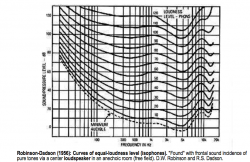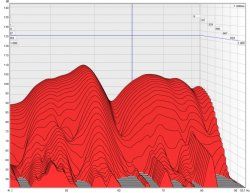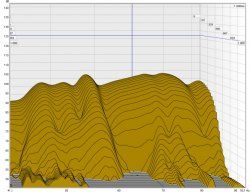Habe mich auch schon gefragt, warum Ethan Winder für kleine Räume nur poröse Absorber empfiehlt und gerade keine Plattenschwinger (anders als in seinem Artikel "Building a Better Bass Trap". Leider erklärt er nicht sehr klar warum, nur dass es schwierig sei, mit Plattenschwingern eine genügend breitbandige Wirkung zu erreichen bzw. brauche man mind. zwei verschiedene Größen abwechselnd, was in kleinen Räumen kaum zu machen sei.
"Please understand that the bass traps described in this article are intended mainly for larger rooms. For rooms smaller than 25 by 15 feet you'll do better with broadband bass traps made from thick rigid fiberglass placed in the room corners. Small rooms have peaks and nulls at all frequencies, so broadband absorption straddling corners is better than the tuned traps shown in this article. This is described in my Acoustics FAQ linked above. Once all of the corners are treated, then it makes sense to consider adding bass traps like these flat on the walls."
http://www.ethanwiner.com/basstrap.html
http://www.ethanwiner.com/acoustics.html
"Low frequency absorbers - bass traps - can be used to reduce the low frequency reverb time in a large space, but they are more commonly used in recording studios and listening rooms to reduce modal ringing and flatten the frequency response in the bass range. This is especially true in smaller rooms where a poor low frequency response is the main problem. In fact, small rooms don't really have reverb at all at low frequencies. Rather, ringing at the room's individual mode frequencies dominates. But in large recording studios, churches, and auditoriums, reducing low frequency reverb is an important reason for adding bass traps."
KURZ: vielleicht beseitigt benders plattenschwinger die moden bei 90 hz und richtung 200 hz, was dazu führt, dass die mode bei 40 hz, die vorher teilweise mit ausgelöscht wurde, am messplatz um so schlimmer bemerkbar wird? dann wird sie nicht verstärkt, der plattenschwinger wäre nur zu SCHMALBANDIG. das würde zu ethan's tips passen.



